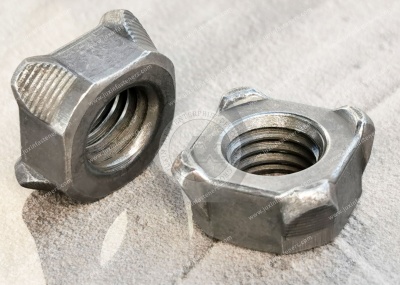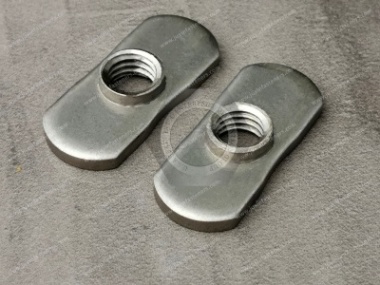Call Us
+86 136 6007 9809
Call Us
+86 136 6007 9809
Jun. 01, 2024
Types, Specifications, Applications, and Welding Processes of Automotive Body Fasteners
Automobiles integrate systems like body structures, electrical components, piping, interior/exterior systems, and chassis suspensions. The body structure forms the foundation, with other subsystems as attachments secured to the body using bolts predominantly. This necessitates pre-welded studs or nuts at appropriate positions on the body. Automotive nut welding utilizes resistance welding machines, also known as projection welders, commonly used in automotive manufacturing for nut welding.
Stud welding involves welding metal studs or similar fasteners (bolts, pins, etc.) to workpieces. Methods include arc stud welding, stored energy stud welding, resistance welding (projection welding), etc. Stud welding equipment is straightforward, with minimal process steps and easy operation. As automotive and stud welding technologies evolve, bolted connections have gradually replaced traditional methods like arc welding, resistance welding, or drilling, becoming a fundamental thermal processing method in manufacturing. For high-quality carbon steel welding screws fasteners and professional technical support, don't hesitate to contact us at adelajonly@gmail.com or visit our website at [Juxin Fasteners]https://www.juxinfasteners.com.


1. Applications of Automotive Body Fasteners
Automotive fasteners (titanium screws) generally refer to threaded fasteners with simple structures and a wide variety, including studs, bolts, nuts, and screws. Fasteners account for 30% to 40% of all vehicle parts, serving as primary connectors in automobiles. Nearly all assembly processes on the final assembly line involve threaded fasteners.
To minimize perforation and ensure body seal performance while meeting subsystem installation needs, approximately 30% of fasteners need pre-welding on the body shell. Welded fasteners applied to the body shell include welded bolts, boss projection welding bolts, end-face projection welding bolts, welded square nuts, welded hex nuts, and welded hex flange nuts, selected based on fixture type, torque requirements, etc.
Among these fastener types, bolt-type fasteners can typically be directly welded onto sheet metal without perforation. In contrast, nut-type fasteners require a pilot hole slightly larger (0.5 to 1.0 mm) than the nominal thread diameter of the nut. For example, the hole diameter for an M6 specification nut should be mm, based on nut positioning and bolt installation requirements.
2. Welding Processes for Automotive Body Fasteners
2.1. Stud Welding
Stud welding is a specialized process that efficiently and cost-effectively fully fuses studs or cylindrical metals with diameters ranging from 2.0 to 25.0 mm onto metal surfaces. Based on different working principles, stud welding machines are generally categorized into stored energy stud welders and arc stud welders. Capacitor discharge stud welding uses a rapid discharge of stored energy capacitors to generate an arc as a heat source, boasting advantages like short welding times and no need for protection. However, it requires specialized studies, limiting its applications. In automotive manufacturing, arc stud welders are more prevalent, requiring stud ends to contact the workpiece surface for welding. Here, we focus on arc stud welding equipment and processes.
2.1.1. Arc Stud Welding Equipment
Arc stud welding machines consist of welding power sources, controllers, ground clamps, and welding guns. Welding power sources typically control grid voltage and current, modulating them into voltage and current suitable for stud welding process needs while driving control inputs and outputs. The manual welding gun, the execution mechanism for stud welding, connects flexibly via cables to the main machine, facilitating movement to suit different welding positions. The control panel's upper left red knob serves as the power switch, with parameters displayed to the right during operation. The lower panel includes input/output interfaces for connecting components.
2.1.2. Arc Stud Welding Process
Short-cycle arc welding modes are generally selected for reliable, efficient welding in practical production. The welding process can be divided into three stages. Once the power source stabilizes, the electromagnetic coil in the welding gun generates an upward electromagnetic force, lifting the stud off the workpiece surface to ignite the starting current arc. Subsequently, when the welding stud reaches its return height, the primary welding current intensifies, melting the stud's end and the workpiece surface. Finally, the arc generates a weld pool on the workpiece and stud end. An internal compression spring in the welding gun presses the stud into the weld pool, securing it once it cools.
Arc stud process parameters generally include welding time, stud lift height, welding current, protrusion length, and buffering. With technological advancements, current machines integrate and match parameters like stud lift height, protrusion length, buffering, etc., with welding current. Therefore, actual production typically requires adjusting only welding current and time parameters. Welding parameters are generally selected based on stud diameter.
Contact Us
Tel.:
+86 020 8621 0320
+86 020 3121 6067
Technical Support:
Navigation
SEND INQUIREY